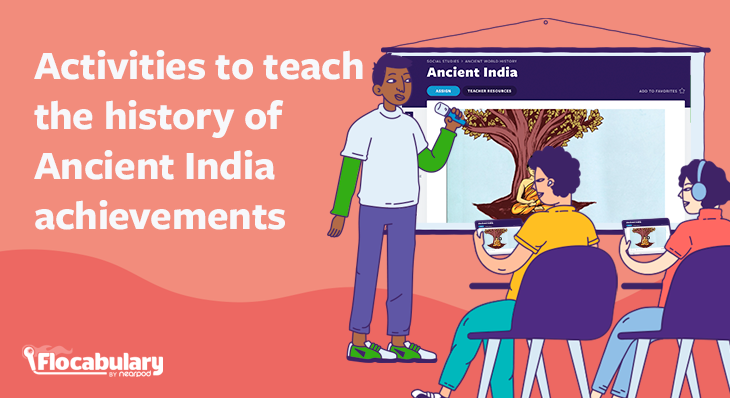
Activities to teach the history of Ancient India achievements
As one of the world’s oldest civilizations, Ancient India has left an indelible mark on the tapestry of human history. From the advancements in science and mathematics to the profound spiritual and philosophical insights, there is much to discover and appreciate about this vibrant culture. We’ll delve into the fascinating aspects of Ancient India’s past, highlighting key milestones and notable achievements. With such a rich history, keep reading to explore equally engaging strategies to incorporate into your curriculum.
What is the history of Ancient India?
70,000 BCE and 3300-1600 BCE
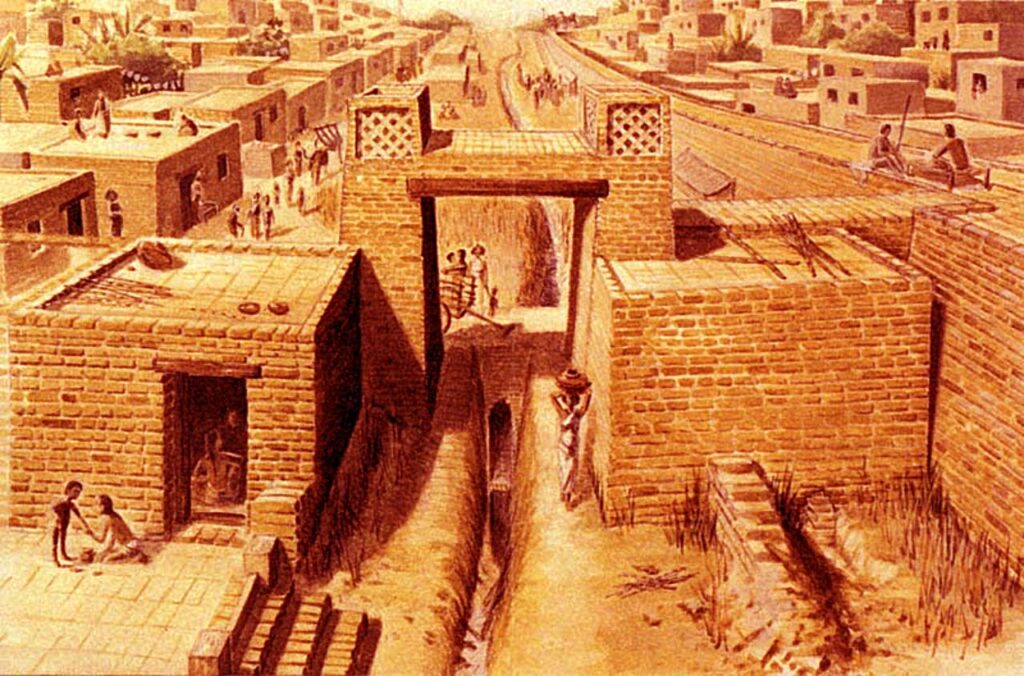
The formation of India began about 40-50 million years ago when the Indian Plate collided with the Eurasian Plate. The collision caused the creation of the Himalayan Mountain range. Humans first arrived in the land now known as India around 70,000 BCE (before the common era). The Indus Valley had fertile ground and rivers to allow for civilizations’ development and cities’ growth. Harappa is one of the most well-known cities in the region and was established around 3300-1600 BCE.
2000-1000 BCE
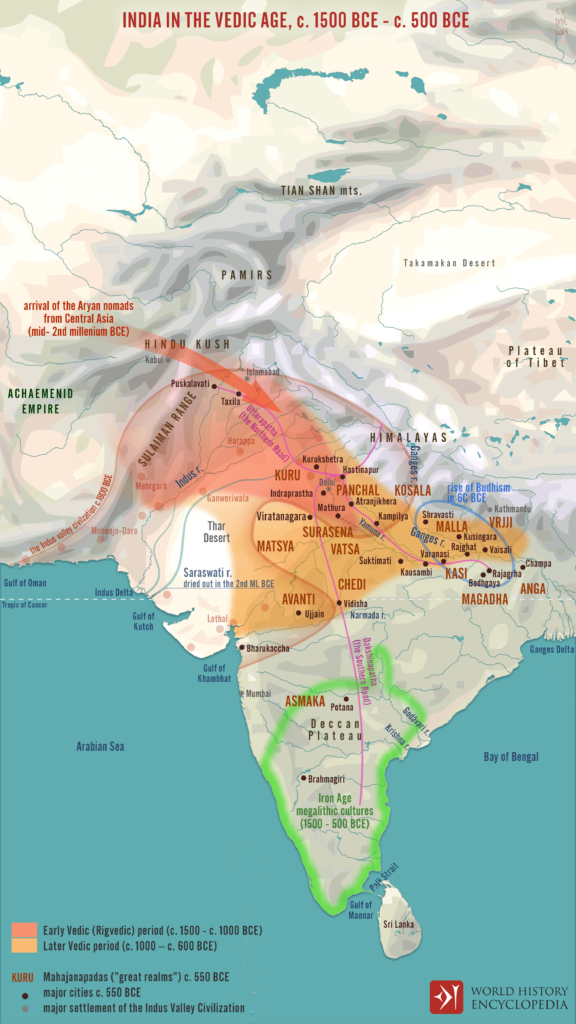
Migrations of Indo-European speakers came in waves between the years of 2000-1500 BCE, ushering in the Vedic or Bronze and Iron ages around 1500-300 BCE, starting first in Northern India and later in Southern India. These migrations also allowed for the beginnings of new religions like Hinduism, created when the Rigveda was composed and merged with local spiritualism around 1500-1000 BCE.
500-486 BCE
Prince Siddhartha Gautama, also known as Buddha, lived from 566-486 BCE and created Buddhism, which has an estimated 400 million followers today. The influx of migrants and the formation of new religions created universities, like those formed around 500 BCE, Taxila, and Nalanda. New literature was also created, like the writing of the Ramayana and Mahabharata (500-200 BCE), two of the most prominent writings of the Ancient world.
300-100 BCE
As the country expanded, the Mauryan Empire was formed around 300 BCE, and new trade routes were established along the Mediterranean and in South India around 200-100 BCE. New agreements were formed with China to extend the Silk Road around the same time, expanding and changing the region. Reference this timeline or share it with your students so they can explore more events in India!
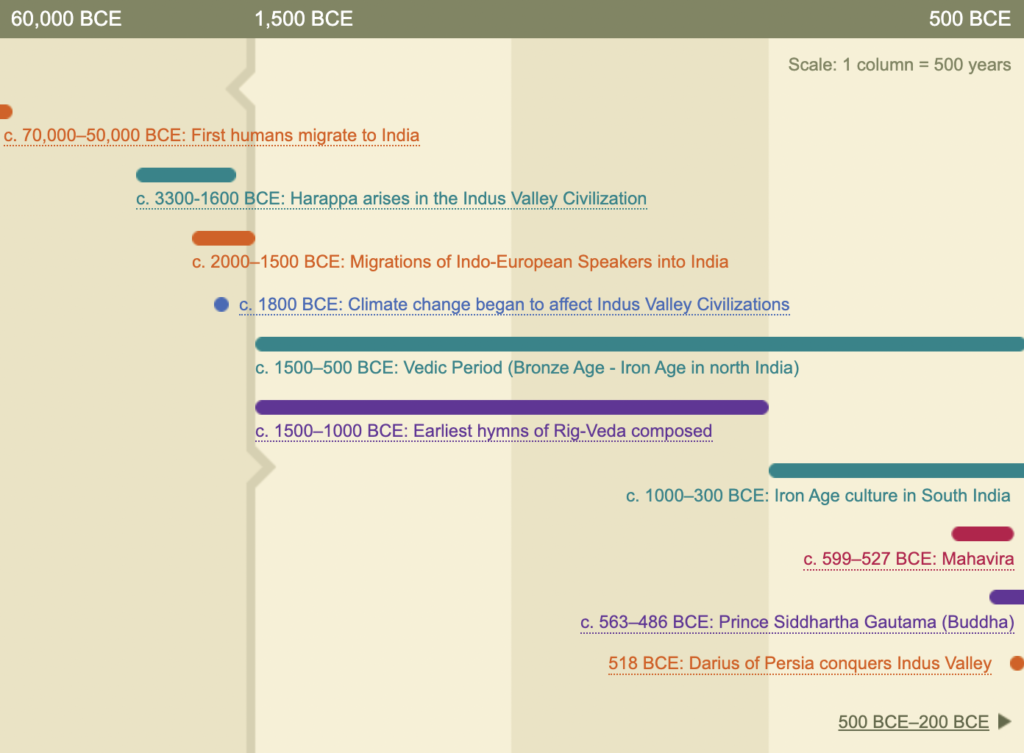
What were Ancient India’s achievements?
Ancient Indian scholars made many discoveries in agriculture, architecture, mathematics, and religion. Some of the most notable inventions include the following:
Agriculture
- Sicles and plows were crafted during the Vedic period (1500-500 BCE)
- The Churka, also known as the first cotton gin, was created around 500 BC; India was well known for cultivating cotton as early as 3000 BCE
Architecture
- The Pillars of Ashoka, built at Buddhist monasteries, were created to share the edicts of Ashoka, a Mauryan Emperor from 268 to 232 BCE; each pillar weighed around 50 tons and was 40-50 feet tall
- The Great Stupa at Sanchi was believed to hold the ashes of Buddha; built by Ashoka originally, it was rebuilt later after it was damaged, and the final building was finished in the first century BCE
Mathematics
- The creation of Numerals originated in India around 500-600 CE and spread later to Europe through the writings of Arabic scholars and mathematicians in the 1100s
- The number zero has been a concept for thousands of years; Babylonians used a mark to notate the absence of a number, but it wasn’t until the Ancient Indians, around 400 CE, that the numeral became a shape (a circle) versus a placeholder
Religion
- Hinduism (1500-1000 BCE), monotheistic at its essence, with the one supreme god named Brahma, with many manifestations of their presence represented by other deities
- Buddhism (563-486 BCE) originated with Siddhartha Gautama; the core of Buddhism is that life is cyclical, with suffering and birth, but if one can achieve Nirvana, it is possible to stop the cycle
- Jainism (500 BCE) shares many beliefs with Hinduism and Buddhism; followers adhere to strict vegetarian diets and believe in nonviolence, and they believe karma influences how followers come back in their next life or reincarnation
Activities to teach the history of Ancient India
With such a rich history, here are some equally engaging strategies to incorporate into your curriculum.
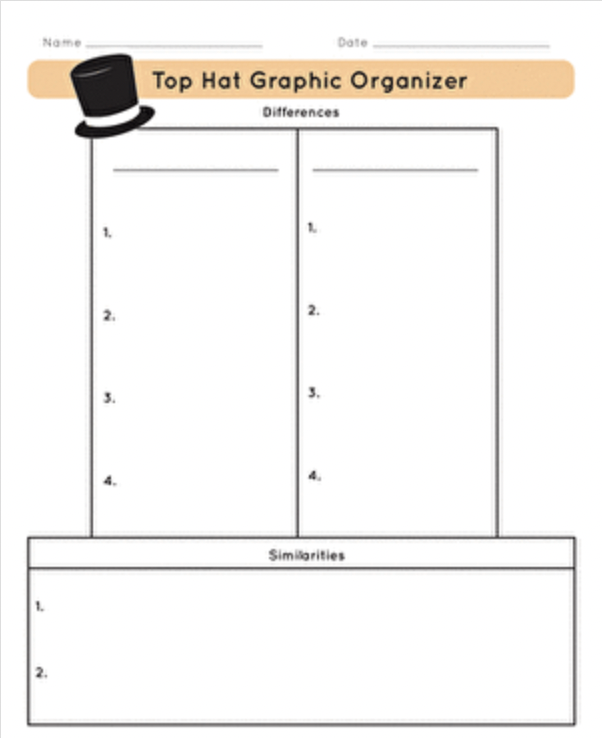
1. Compare civilizations
Compare and contrast the beliefs and accomplishments of Ancient India to those of another ancient civilization! It is important for students to understand how each civilization developed and grew individually and allow students to explore similarities and differences between the different regions of the world. Guide students to focus on culture, architecture, and technology. Use a top hat chart or a Venn diagram to compare. This is great as an individual activity to prompt students to share their findings with the class.
Use the following videos from Flocabulary to help with students’ comparison:
Ancient World History Flocabulary Lessons
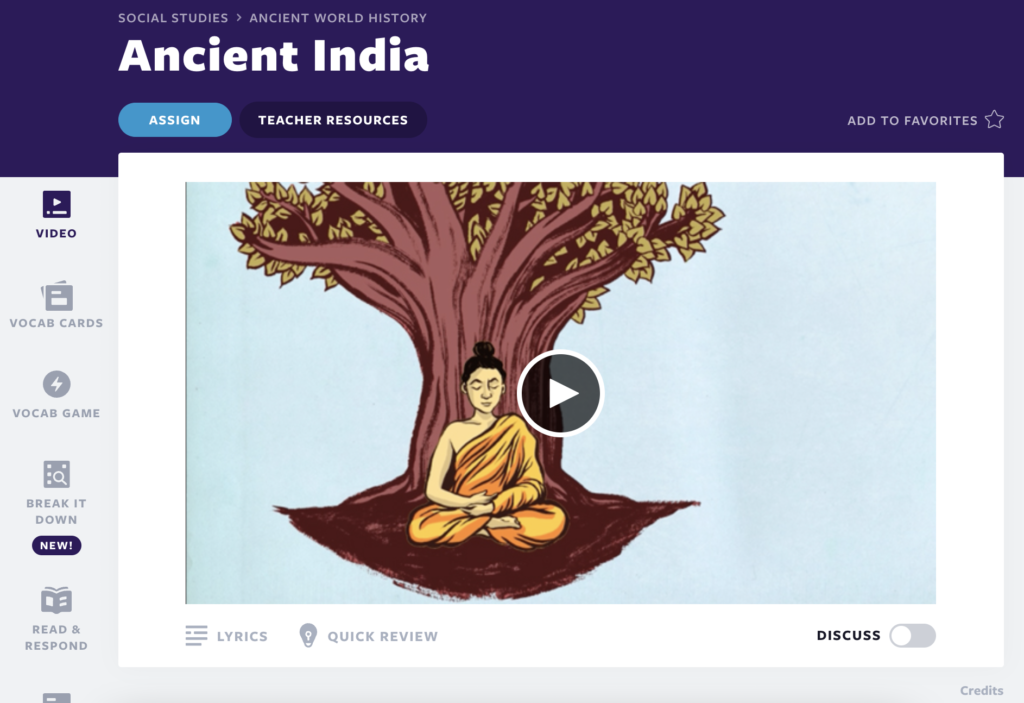
- Ancient India: In this song, travel to the resourceful destination of Ancient India. Protected by the Himalayas and fed by the Indus and Ganges rivers, India will dazzle you. Pictographs, the caste system, Hinduism, and reincarnation. Learn about the modern marvels of this ancient civilization—the twin cities of Harappa and Mohenjo-Daro had a sewage system!
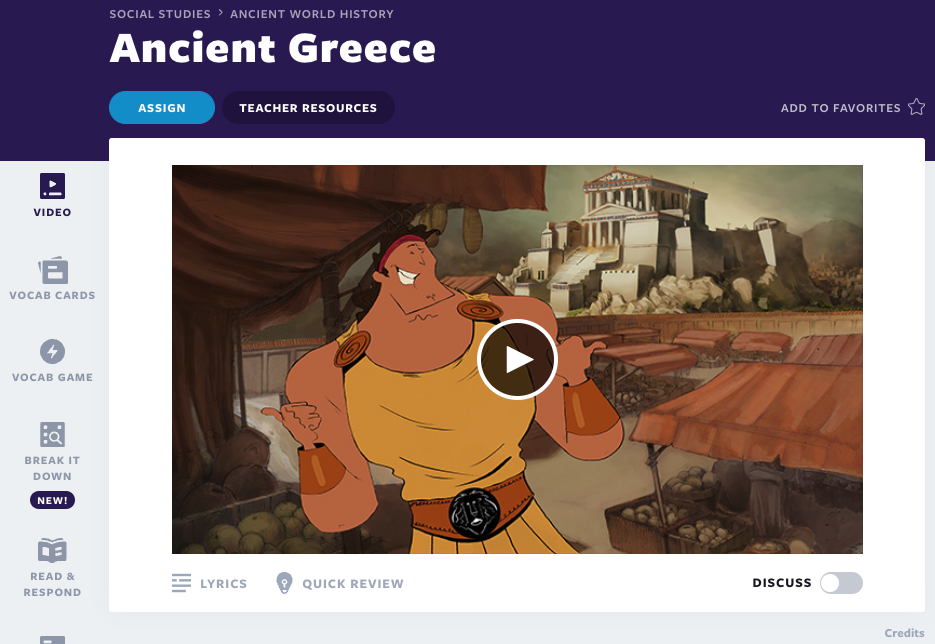
- Ancient Greece: Groundbreaking ideas were an everyday occurrence in ancient Greece. In this song, we’ll compare the philosophical views of Socrates, Plato, and Aristotle and give a quick shoutout to Pericles for developing our modern-day democracy. And meet Aristotle’s star student: Alexander the Great. Are you ready for a party at the Parthenon?
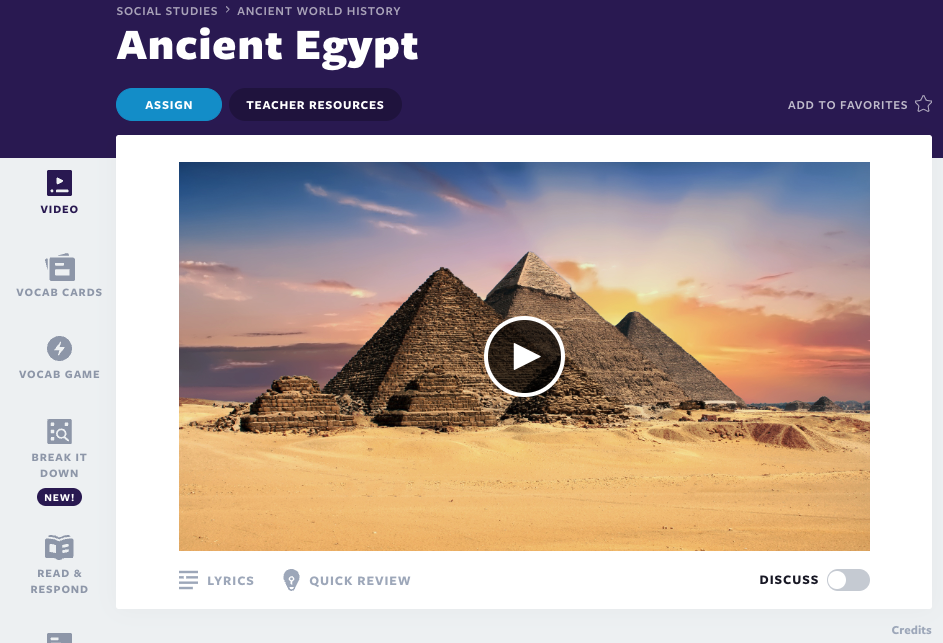
- Ancient Egypt: In this Ancient Egypt music video, we take you back to the days of giant pyramids and hieroglyphics. This song covers the ancient Egyptian civilization that flourished along the Nile River. We explore what happens on a slave’s day in ancient Egypt. On the other side of the pyramid, take a peek into a pharaoh’s life of luxury and the complex process of mummification that ensured his first-class ticket to the afterlife. All from the perspective of Osiris and Isis, important Egyptian gods.
New to Flocabulary? Sign up for an account to access these resources.
2. Compare and contrast major religions
Research and compare the similarities and differences between Hinduism or Buddhism and one of the other religions. This activity helps students understand the differences between monotheistic and polytheistic religions, the origin and creation stories, and symbols that help represent the religions. Students will also be able to understand the perspectives and key beliefs of the religions. Use a T-chart or a Venn diagram to highlight the similarities and differences. Use additional readings about Hinduism to differentiate for advanced readers!
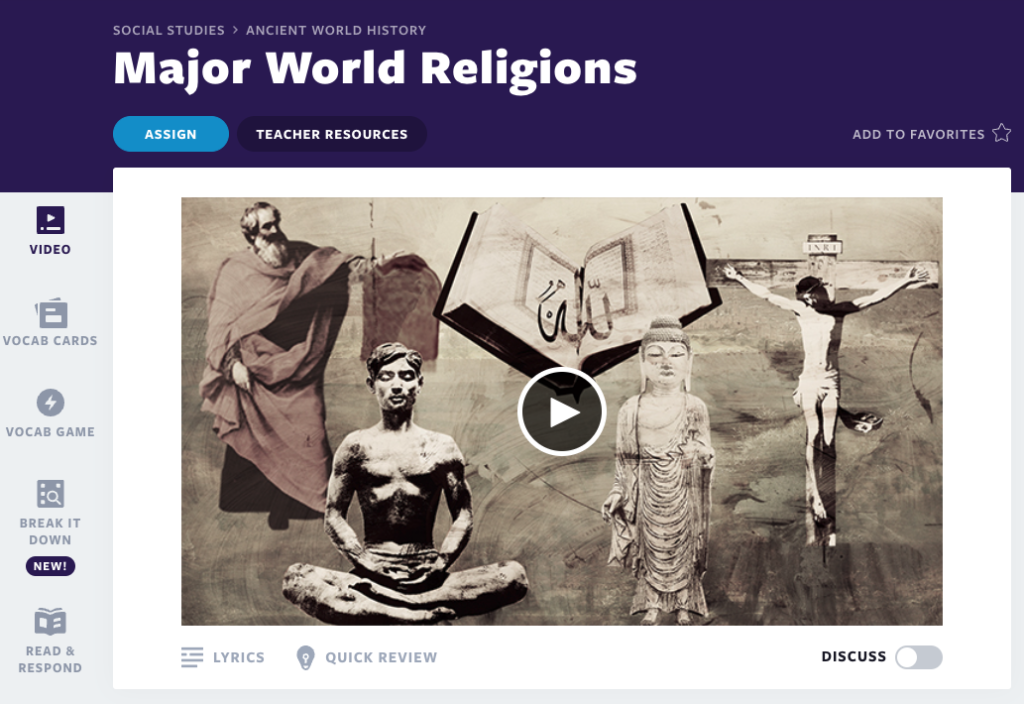
Flocabulary’s Major World Religions video lesson is an engaging resource to share with students. We begin with Abraham and Moses’ commandments as we follow the Hebrew people to the Promised Land. Next up, we meet Jesus and his Apostles as we trace the spread of Christianity around the globe. Then we visit Muhammed and learn about Allah, the Qur’an, and the basic tenets of Islam. Over in India, we learn about reincarnation and karma as we explore Hinduism. We make our last stop with Buddha.
3. Strengthen vocabulary
After watching the video on Ancient India, sharpen students’ vocabulary using the Vocab Cards and Vocab Game. Teaching vocabulary will help support students’ verbal and written communication about Ancient India. By incorporating unique vocabulary specific to the region, students will be confident in the basics of the unit, and it is a great beginner activity following watching the video. These activities solidify their understanding of key vocabulary introduced within the video and have students prove their understanding by using words in a sentence or illustrating them. You can also print out the handouts for a great collaborative activity!
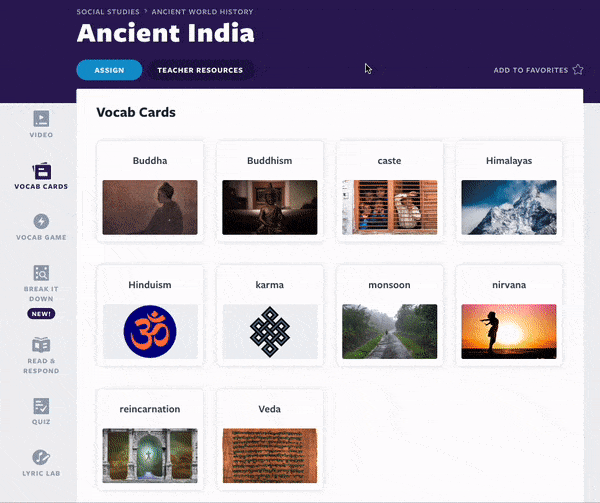
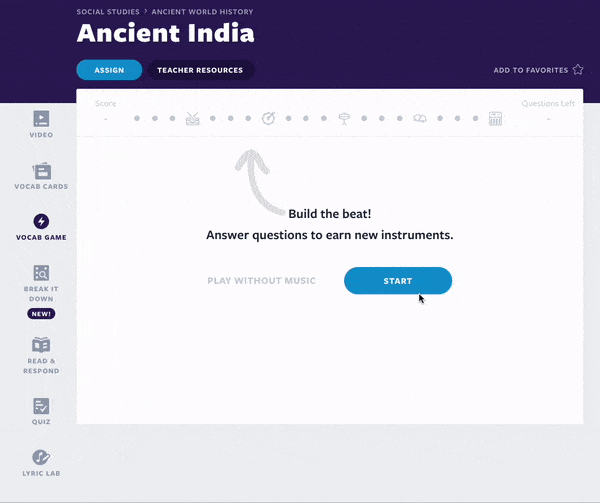
4. Foldables on the caste system
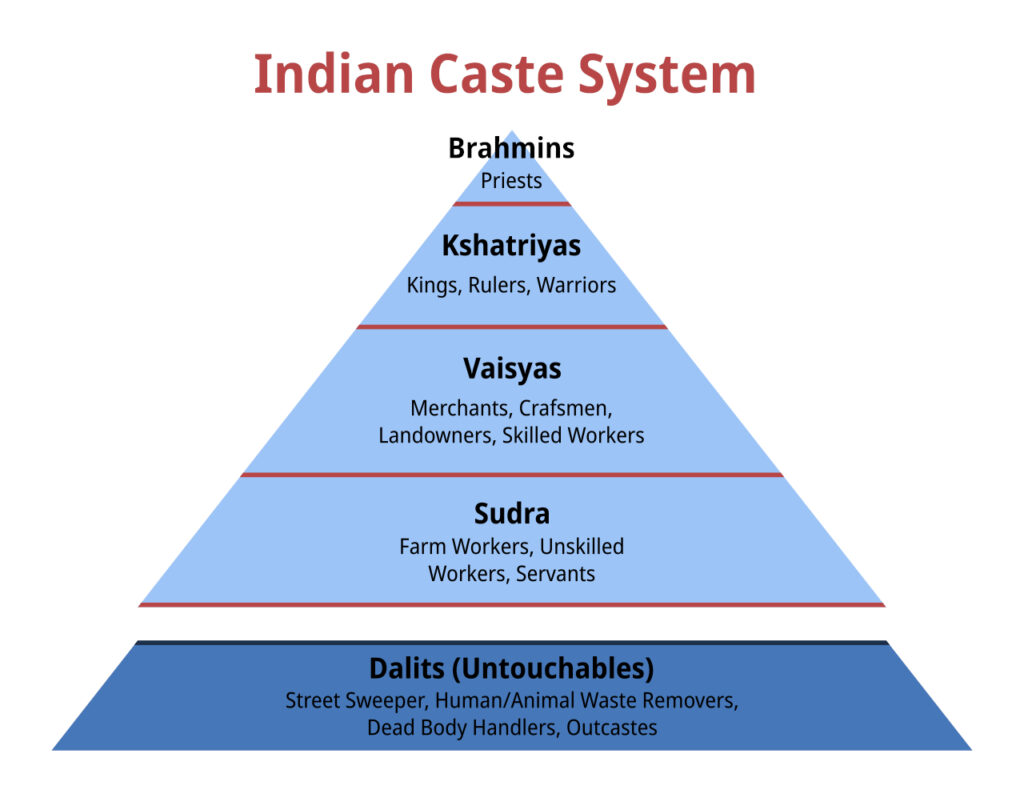
Solidify students’ understanding of the caste system introduced in Ancient India by creating a foldable. The caste system has often been misunderstood and is a complex social organization started by the following Hindu texts. Students will be able to understand the social impacts of the caste system and how an individual’s placement within the caste system impacts daily life. Include a reading explaining India’s caste system before having students craft their foldable. Have students craft a summary of what the caste system was, and then have them break down each hierarchical group. Students should use this exercise to address the age-old questions of who, what, when, where, and why.
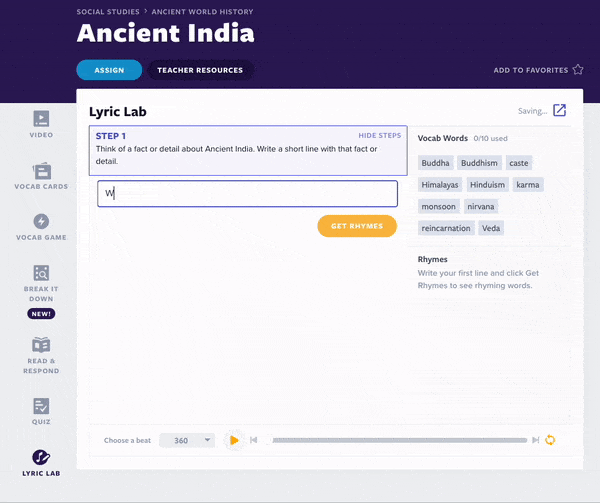
5. Create using Lyric Lab!
Ask students to write a rap about Ancient India using Lyric Lab! At the pinnacle of Bloom’s Taxonomy, students should be able to create lyrics that prove their understanding of Ancient India. Students can craft their rap, select a beat, and perform their songs for their classmates. Allow students to work through the lesson sequence and gain knowledge of the vocabulary. When assigning the lesson, You can customize the prompt to differentiate for students’ needs.
6. Mind mapping achievements
Craft a mind map of one of the achievements of the Ancient Indians. Have students select one achievement from Ancient India and trace its impacts throughout the millennia. Allowing students to explore the impacts of achievement shows the influence of Ancient India on today’s culture and society.
7. Mapping the movement of religion and trade routes
Trace the movement of ancient traders and how they spread Hinduism and Buddhism on a map. Have students annotate where on the map different sects of Hinduism and Buddhism are created. Next, trace where the major trade routes of the ancient world were located. Have them explain what conclusions can be drawn.
Teach about Ancient India using Flocabulary
Ancient India’s influence stretches even into the current day. Using the above activities with Flocabulary, students increase their knowledge of Ancient India’s history.
On Flocabulary, navigate to the Social Studies tab, and select Ancient World History to explore other videos on ancient civilizations and expand your student’s knowledge of the past!
New to Flocabulary? Sign up for an account to access these resources.
This Post Has 2 Comments
Comments are closed.

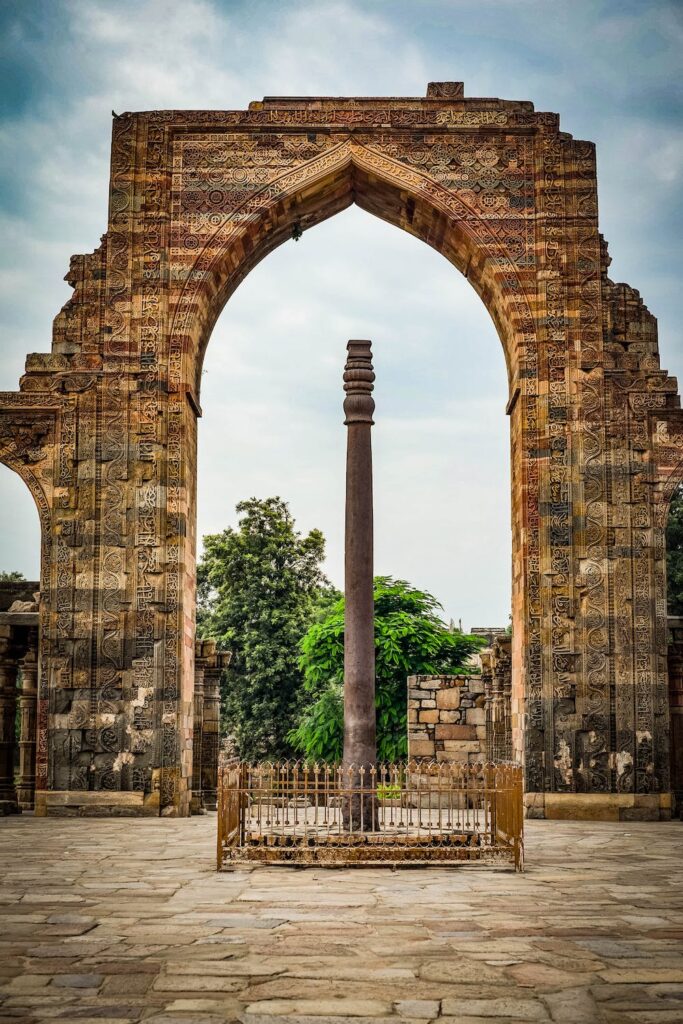
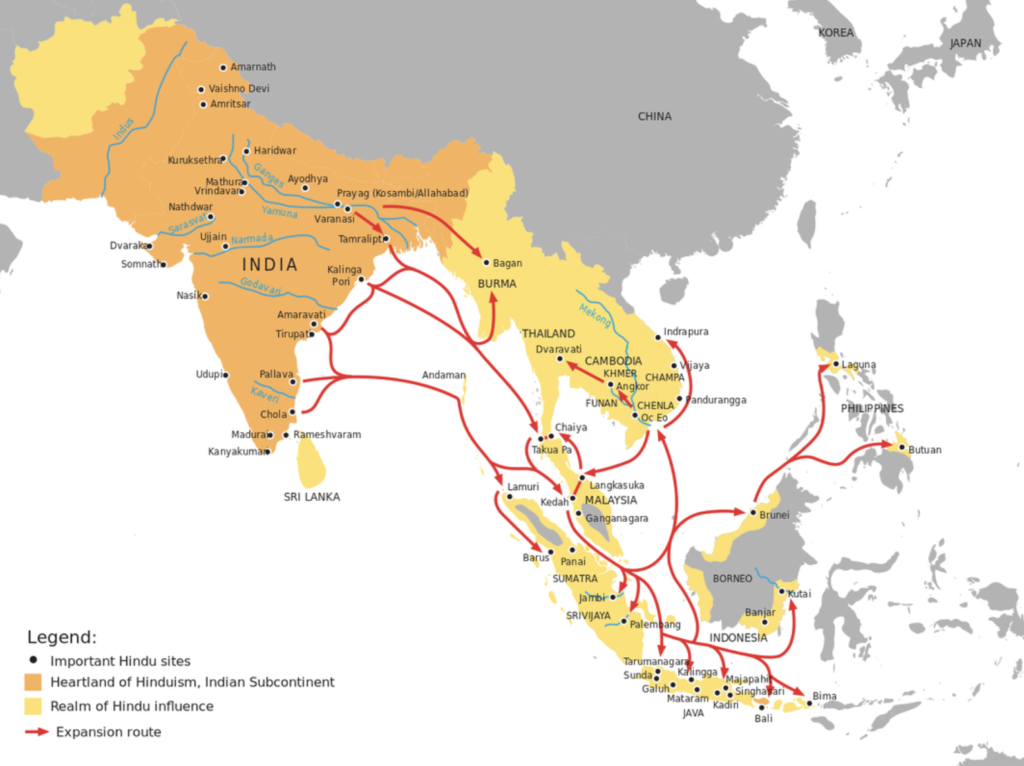
This was such a cool site and it helped me a lot!
awesome facts!:)